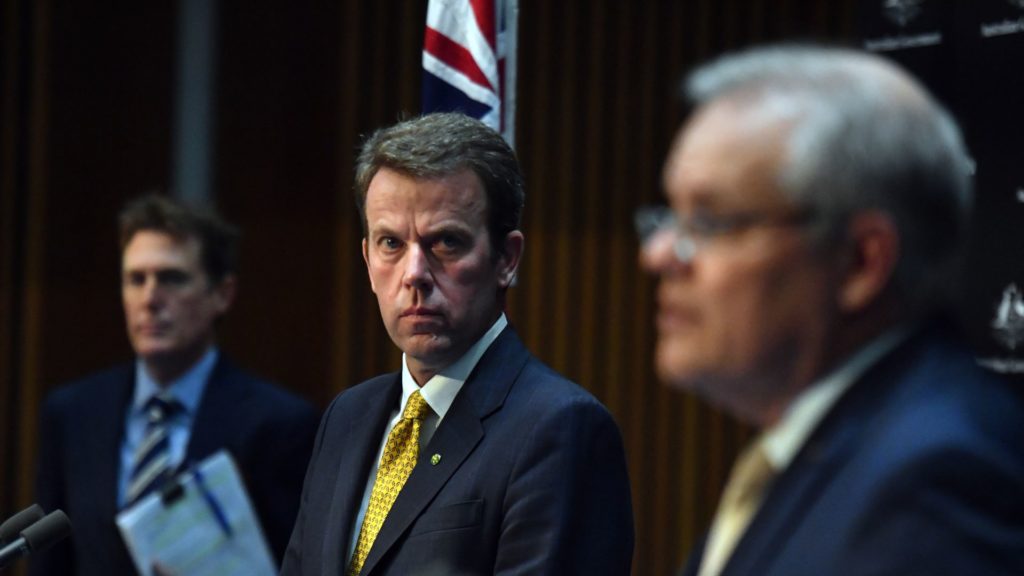Female students would be the hardest hit by the proposed changes to university funding announced last week. While women have entered higher education in larger numbers than men have since 1987, a 2019 study by the Grattan Institute revealed the gender make-up of university lecture halls and tutorial rooms has changed little since then. If this pattern continues – and there is no reason to suppose it won’t – the changes proposed by Education Minister Dan Tehan would see women graduating from university with higher student debts than men and taking longer to pay them off.
The changes proposed by Education Minister Dan Tehan would see women graduating from university with higher student debts than men and taking longer to pay them off.
In short, Mr Tehan proposed a radical overall of the government and student contributions to undergraduate degrees as a means of funding a looming demographic spike in enrolments due to the Howard/Costello baby bonus generation. In order to provide an additional 39,000 places by 2023 and 100,000 places by 2030, Mr Tehan says the government will need to dramatically increase student contributions for some disciplines while reducing student contributions in subjects it considers to have high employment prospects.
For example, students opting for humanities or communications degrees, the cost would increase from $6,804 to $14,500 per year, while those undertaking degrees in mathematics or agriculture would see their student contribution decrease from $9698 to $3700 per year.
 Australian Bureau of Statistics data shows that women by far outstrip men in the numbers of students studying humanities and communications whereas male students make up the greater percentage of students in mathematics and agriculture degrees.
Australian Bureau of Statistics data shows that women by far outstrip men in the numbers of students studying humanities and communications whereas male students make up the greater percentage of students in mathematics and agriculture degrees.
Looking at the changes more broadly, in addition to humanities and communications, degrees in law, commerce, hospitality, society and culture and creative arts are all set to become more expensive. Women outnumber men in each of these degrees with the exception of commerce where the gender divide is roughly equal.
Most of the degrees set to become much cheaper are those where male students make up the greater percentage of the classroom.
Most of the degrees set to become much cheaper are those where male students make up the greater percentage of the classroom, such as science, engineering and information technology. The exceptions are education and nursing degrees both of which are female dominated and which are set to become less expensive.
In announcing the reform package, Mr Tehan said that prospective university students could choose to do a cheaper degree. The proposed changes could be beneficial from a gender equality perspective in that they may prompt more young women to study STEM (science, technology, engineering and mathematics) subjects at a tertiary level.
Unfortunately, it is not that simple. The gender divide in university enrolments has its roots in high school. While boys do not outperform girls in STEM subjects, data from the NSW Education Standards Authority indicates that girls are more likely to choose humanities and creative arts electives whereas boys are more likely to take STEM electives.
 This data also shows that the gender pattern in subject selection is entrenched, having changed very little over the last few decades despite myriad initiatives designed to achieve greater gender balances across all subjects.
This data also shows that the gender pattern in subject selection is entrenched, having changed very little over the last few decades despite myriad initiatives designed to achieve greater gender balances across all subjects.
Young women in high schools across Australia who have already shaped their future by choosing the same electives their older sisters studied, now face the prospect of a Higher Education Loan Program (HELP) debt three to four times greater than many of their male colleagues. That, in turn, will compound existing gender income inequalities.
The 2019 Graduate Outcomes Survey indicated that there was higher labour force participation for humanities graduates than science and mathematics.
The reality is that people who study these degrees do not find it more difficult to find employment. The 2019 Graduate Outcomes Survey indicated that there was higher labour force participation for humanities graduates than science and mathematics. However, while men and women will graduate from the same degree with the same HECS debt, women on average will receive lower salaries.
The Workplace Gender Equality Agency calculates that the national gender pay gap is 13.9%. A study by the Australian Human Rights Commission on women’s economic independence indicated that women take longer to pay off their HECS debts due to lower wages and spending longer periods of time out of the workforce caring for dependents. This results in women having less disposable income than men and accumulating more interest on their student loans.
It is evident that gender equality was not an objective that informed the government’s proposed higher education reforms.
It is evident that gender equality was not an objective that informed the government’s proposed higher education reforms. In the ‘Job-ready Graduates’ paper that outlines the changes, there is discussion of important equity considerations such as increasing access to university for rural students, indigenous Australians, people with a disability and those from low socioeconomic status backgrounds.
However, there is no reference to gender inequality anywhere in the 35-page document. The document explains that the changes to tertiary funding are designed to prepare students for the future workforce. The future workforce envisaged is one where male dominated professions grow larger and female-heavy occupations, with the exception of nursing and teaching, are deemed less worthy and come with a significant financial penalty from the outset.




